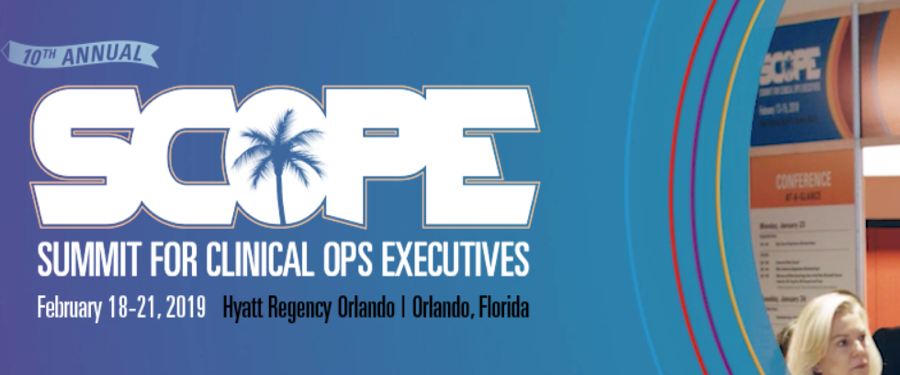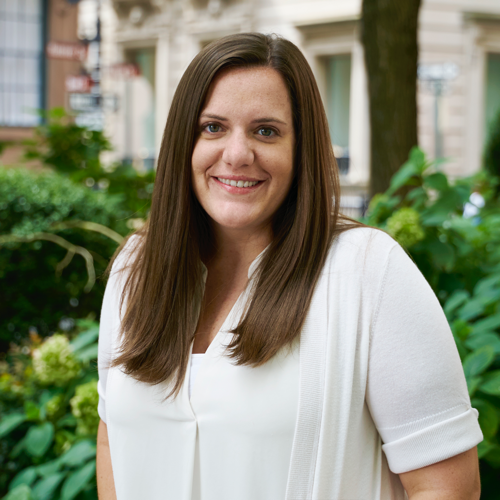SCOPE Summit: Reflections on Empathy

There are conferences we attend to connect with clients. There are conferences we attend to build partnerships. At SCOPE, we are able to do both. The SCOPE Summit convenes the best, the brightest, and the most dedicated in the clinical trial operations space with one aim: to accelerate clinical research. This is why we go to SCOPE.
Once again, this year’s meeting was no disappointment. We connected with clin-ops leaders who shared their achievements and challenges in patient recruitment. In turn, we shared our precision recruitment solution, demonstrating that this model can save up to six months of recruitment time. Saving time and filling trial quotas was top of mind and we were grateful for the engaging conversations.
Another topic that thread throughout the meeting was about patient centricity, specifically a new definition or gradual shift in the understanding of what that often over-used term means. Discussions centered on patient-centricity needing to be human-centric. That is, seeing the person not the patient and understanding patient humanity as essential to the execution of research.
One of the more powerful arguments for this thinking was made by Heather Swech, Head of Marketing, Patient Recruitment and Retention at Bioclinica. She launched her talk with a moving video from the Cleveland Clinic called “Empathy: the Human Connection to Patient Care,” which asks the question: “If you could stand in someone else’s shoes… Hear what they hear. See what they see. Feel what they feel. Would you treat them differently?” The answer is a resounding yes and Swech affirmed our belief that while it’s important to keep the patient in mind when designing and executing research projects, it’s even more critical to keep in mind that all patients are, in fact, human. We’re not looking for subjects — we are looking for real people to take part in research.
This holistic, person-centered point of view can help even better guide both researchers as they design trials, and recruitment companies as we look for trial matches. For example, take someone who meets all of the qualifications for a study and is eager to take part but declines to volunteer because they don’t want to miss their child’s baseball games. Or someone who seems like a perfect match for a trial, but isn’t interested because work is too stressful at the moment. These aren’t barriers about safety or cost or logistics — these are the human elements that need to be accounted for when planning and executing trials. This could mean planning trials with a lot more scheduling flexibility or setting up an engagement campaign for people who aren’t ready to join yet but would like to when it’s more convenient.
Looking at the whole person when recruiting for a trial is not a new concept to us. Take a recent survey we conducted late last year. We partnered with SCORR marketing to gain a better understanding of what people with various indications actually think of clinical trials, and what might motivate them to participate. We were excited to share some of the findings with those who visited our booth at SCOPE.
For our research, we surveyed nearly 4,000 people, of which 89% identified as a patient. About a quarter had taken part in a trial before, and key motivators for participation were altruism, quality of life improvements, and the ability to receive the best care possible. Just looking at those motivators is telling. Patients want to take part in research to help others and to help themselves. It’s that simple. It’s that human.
So how can we use this knowledge of patient humanity to help accelerate research? As the video we saw at SCOPE showed us, it involves thinking beyond someone’s diagnosis, or treatment plan, or prognosis. Get to know patients as humans, and build trust in the process. A key finding of our survey was that building lasting relationships with patients improves retention, repeat study consideration, and continuous process improvements. This makes sense — when people feel heard and understood, they are more willing to contribute. This is why we’ve built a network of more than 250 patient communities and advocacy organizations through which we can reach patients through channels they know and trust. Extending this idea of building lasting relationships into planning and executing trials will take the clinical trial industry a long way.
The evolution from “doctor knows best” to “patients as partners” to “humans as stakeholders” continues. We’re heartened by the continued empowerment of patients and the embrace of “humans as stakeholders” at SCOPE. We’re looking forward to seeing how looking beyond someone’s eligibility criteria matches can accelerate research even further.

